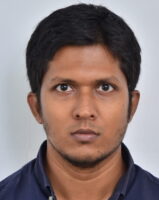Last Updated on September 3, 2022 by themigrationnews

The book ‘Immigrants-Your country needs them‘ is written by Philippe Legrain. The author highlights the positive sides of immigration, such as the availability of an additional workforce at a lower price and a dedicated generation who travelled a thousand miles to change their fate. This book was published in 2007; it spans 392 pages and is divided into 16 chapters. In his book, Philippe Legrain echoed some facts, such as Migration is a human’s birth right, it is illegal to prevent migrants, and technically, stopping it is impossible. He supported his argument by dividing the book into 16 chapters. The author established that Migration is a human right, and an individual’s right to move from one place to another is preserved by article 13.
Chapter one- War on our borders; Chapter two- Border Crossing, and Chapter three- Why we need the huddled masses, brought the example of the US-Mexican border, in which the authorities took the oath to prevent Migration. However, their failure ended with exploitation and deaths. The author further clarified that Migration has continued for more than 1000 years; without any doubt, it is immoral to obstruct such ancient practices. The author talks about the incapacity of preventing migration flow in further discussions and states that the US investment in securing its border was around 3.8 billion dollars from 1993 to 2004. However, the result of such colossal spending was not satisfying (P, 40). Despite this robust setup, the number of unauthorised immigrants is estimated to be unchanged (p, 40-45).
Subsequently, the author mentioned in chapter three that Migrants are compulsory and beneficial for the destination country. Most developed countries only consider its effects on their own countries; moreover, destinations and states seem to give proper value to immigrants. Legrain mentioned that the Swedish USA resident contributed to boosting the Swedish economy by sending remittances. Between 1870 and 1910, one-sixth of the population left Sweden for the United States. These Swedish immigrants not only sent back money and opened trading contacts but also relieved Swedish society’s pressure regarding jobs and housing (Page, 164).
The author added a fundamental question to describe chapter four, “The global talent contest,” where he questions whether immigrants are taking jobs from locals or lowering wages but do immigrants cost jobs. The answer is that immigration leads to economic development. Usually, the developed countries’ rich infrastructure allows immigrants to be more productive and nurture the skills of immigrants to grow the economy. Most importantly, immigrants are doing 3D (dangerous, dirty, and demeaning), which is undoubtedly essential for any society. Furthermore, the developed states lack youth, mostly ageing people, due to the low birth rate. So, providing service for this ageing generation of young immigrants is the only solution that the currently developed states have.
The author brings up a significant issue in the fifth chapter, “Cosmopolitan and the rich“, the importance of different ideas, creativity, and experience for a knowledge-based economy. Since 1990, the working-age population of Israel has been increasing. In 1997 Israel noticed that around 15 percent of the population was added to its working generation, mostly having new ideas. Only from Russia and Ukraine, the estimated number of Jews who migrated to Israel was around 700000. It is important to note that all migrants share the goal of earning money, working hard and setting a prosperous life. So, while many hard-working and self-motivated people are shifting cordially, they end with some potential outcome (P, 134).
In chapter six, “Stealing our jobs?,”; chapter seven, “Snouts in our through?” Chapter eight, “Our Heroes,” and Chapter nine, “Brain Drain or Brain Gain,” the author mentioned the ‘point-based’ system in which immigrants must demonstrate specific beneficial skills for the destination country. By following the point-based method, developed countries like Australia and Canada control recruitment from outside (P, 184). Nevertheless, the author is also concerned that the developed states must not overlook the importance of low-skilled workers’ immigration. The low-skilled workers do those jobs that others hardly prefer, such as maintaining the roads, providing services as housemaids, or taking care of children, which are undoubtedly very important. Moreover, it allows the native to stay tension free while spending long hours in offices.
Chapter eight talks about the Philippines’ innovative idea of appreciating its migrant workers by introducing ‘Bagong Bayani’ (modern-day hero) awards for demonstrating moral courage, hard work, and track record of sending money to home countries (P,161). In the end, the author added the suggestion of Dani Rodrik from Harvard University suggested that more workers from emerging countries are allowed to work in rich countries for three to five years and later need to be replaced by a new wave of Migration (P, 205 -206).
In chapter nine, Legrain mentioned that the western method of visualising Migration mainly considers the effects of Migration in their countries. However, all of the impacts of human migration in the original countries are overlooked. Western countries value highly skilled members of society and welcome highly skilled members from other countries. The migrants often do not return to their original countries after the process (P,180-186).
Chapter ten, “It need not be forever“, expresses the benefits that the low-skilled migrants can provide to a developed state. Moreover, while the political elite gives long lectures about the negative impact of Migration, they always do not regard the arrival of Ph.D. holders, surgeons, or any other highly skilled workers on their shores as a problem. Undoubtedly, the importance of low-skilled migrants for any developed state is crucial.
In Chapter eleven, “Alien nation?,” the author addresses Peter Brimelow’s thought which is the concept that America is a significant ethnic component that promotes all equality, certain rights, and achieving life, liberty, and the pursuit of happiness. Moreover, Brimelows quoted President Calvin Coolidge, “Americans must be kept American. President Calvin Coolidge was the person who shut the door for immigrants in 1924 (P, 217). In this chapter, the author also compares the American and Canadian cultural ways of integrating migrants into the host society (P, 221-225).
In Chapter twelve, “Huntington and Hispanics,” the author summarises Huntington’s thoughts. According to the author, Huntington believes that the United States is based on the Anglo-Protestant culture. The first settlers and the ‘creed’ – the set of beliefs embodied in the Declaration of Independence penned by Thomas Jefferson in 1776, such as Americans’ inalienable rights to ‘life, liberty and the pursuit of happiness – that it produced (P,229).
Chapter thirteen, “Stranger, can you spare a Dime?; fourteen, “Learning to Live Together“; Chapter fifteen, “Illiberal Islam?,” and sixteen, “Open border,” discuss Goodhard’s claim that ‘Scandinavian countries with the biggest welfare states have been the most socially and ethnically homogeneous states in the west. The welfare state has always been weaker in the individualistic, ethnically divided US compared with more homogeneous Europe.
Furthermore, the author added that Sweden is a generous welfare state, and perhaps the Swedish are more compassionate than others. Moreover, Sweden is not only a world leader in providing financial assistance to emerging countries but also contains a reputation for welcoming political refugees. Interestingly, five percent of Swedish citizens were born outside of Sweden (P,254).
In the last chapter,’ Open border,’ some reasons for not appreciating the immigrants were conferred. The author added that many want immigrants to adopt the presiding countries’ culture and the immigrants are also highly increased to abandon their home countries’ culture and practices. Many want immigrants to abandon the cultural practices of their home country and adopt the destination countries’ cultures. However, it is pretty impossible because some of the origin countries, such as African countries, have diverse cultures; along with their country, they also represent their ethnicity. That is why it seems complicated to identify the abandonment of any immigrants’ home countries or ethnic cultures (P, 318-322).
This book is the fruit of an endeavor to understand how compulsory immigrants are for balancing the world. Moreover, this book is a complete package for promoting Migration. The book mainly highlights one of the hidden parts of global development, Migration, and rebuttals on the negative criticism of Migration. This book is based on academic publications, case studies, interviews, newspaper journals, and authorities’ information. However, the author hardly demonstrates the perspective of natives who do not welcome migrants. Additionally, the thought of dedicated politicians making anti-migrant policies and a vast border investment for illegal immigrants was not illustrated elaborately. So it can be said that this book did not touch the other side of the coin. It would be fascinating to view Migration from the anti-migration policymakers. I will recommend this book to those who have a keen interest in labour migration. Even if the reader is not interested in migration, they should prefer this book because the author will take readers’ attention and help them travel from the past to the presence of human migration. Especially the case studies and true events will grasp the focus of readers

Mehedi Hasan is an Erasmus scholarship holder for European Masters in Migration and Intercultural relation (EMMIR) Program. He also holds a master’s in Political Science from the International Islamic University Malaysia, Malaysia. Mr Hasan’s research interests include online political activism, foreign policy, and migration studies. He is currently working on several migration projects that deal with Bangladeshi immigrant businesses in the USA, second generation in the GCC states, Gulf migration policy, and online political activism in Bangladesh. During his postgraduate studies, Mr. Hasan worked on a project entitled ‘COVID-19 and migration in the Gulf states’ for the Gulf Studies Centre, Qatar University. He has worked in two Scopus indexed journals on labour migration and one book chapter on gulf migration policy. He was also involved in research activities at the Centre for Islamization, International Islamic University Malaysia, Malaysia.
